How to Help Prevent Traffic Jams
March 27, 2014
We’ve all experienced it: the dreaded traffic jam. Sometimes these frustrating backups are caused by accidents or construction, however, there is another breed of traffic jam that is born out of the simple act of bad driving.
Last year, an MIT professor presented an algorithm that could be used in smart cars to alleviate traffic flow problems. Berthold Horn, professor in MIT’s Department of Electrical Engineering and Computer Science, came up with the idea after suffering through the heavy traffic on Massachusetts’ Interstate 93. He explained that backups occurred as a result of variations in speed, which were magnified as they passed through a lane of traffic. One driver would slam on their brakes, causing the driver behind them to do the same, and so on, until cars at the end of the line became backed up, as we often see on highways and interstates. If you’re having trouble wrapping your head around this visual, check out the simulator posted on the MIT website.
The proposed solution was an innovative cruise control system that measured the distance and velocity of vehicles behind and in front of the car, adapting the speed to stay roughly halfway between the two. This way, the car wouldn’t have to slow down as drastically if the vehicle in front braked, and the car would also be less likely to pass on the dramatic change in speed to the car behind it.
However, we don’t necessarily need technology to overcome this traffic flow problem. We simply need to learn how to drive correctly, and foster a culture that encourages smart drivers. If every driver kept their vehicle a reasonable distance behind the person in front of them (1 – 5 car lengths depending on the speed), then we could effectively achieve an ideal state of traffic flow.
Of course, we don’t live in a perfect world with perfect drivers. Most drivers have a “me first” mindset, many are driving full of road rage, and far too many are driving distracted. Then, there are the drivers that fly across three lanes of traffic with no blinker, the drivers that tailgate and brake-check, and the drivers that like to switch lanes every two seconds. All of these things cause disturbances in the normal speed of traffic flow, causing people to slam on their brakes, causing the cars behind them to slow down drastically, and so on all the way down the line until the inevitable backup occurs. This is why we all have to sit in traffic in the middle of a 70 mph interstate with no stop lights, no construction and no accidents. This is how traffic jams are born.
So, be a smart driver and encourage everyone you know to do the same. It’s the quickest and simplest solution… at least until computers begin to do it for us.
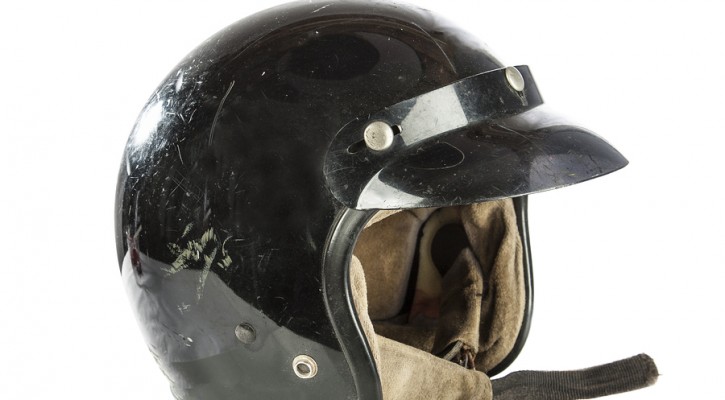
Out With the Old, In With the New
March 27, 2014
As you dust off motorcycle gear for a fresh riding season, you might notice that the old helmet is starting to show a little wear and tear. If you’ve had it for a few years, then chances are it’s about time for a replacement.
Most helmet manufacturers recommend replacing your helmet every five years. You don’t have to take the company’s word for it, though. Check and see for yourself whether or not the helmet still has its life-saving capabilities. Is the chin strap beginning to fray? Does it stay tight at its attaching points? Is the shell chipped or cracked? How is the liner? Glue, resin and other materials will degrade overtime, especially when exposed to the common elements of motorcycle life: cleaners, paints, fuels, hair oils, sweat, etc.
A fresh, new helmet will ensure the highest standards of protection for your precious head, and are likely to use better materials for a better fit and greater degree of comfort.
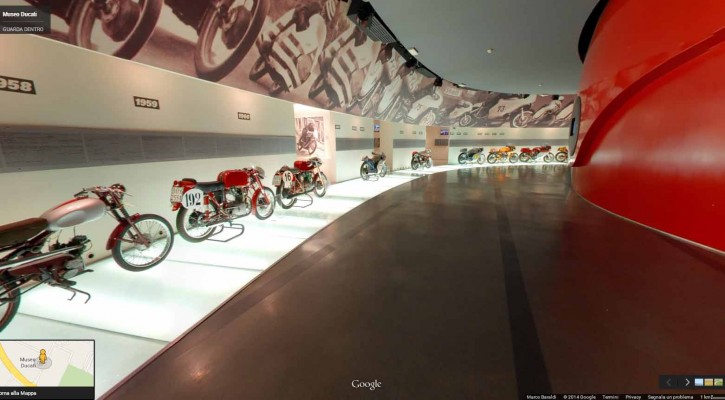
Museo Ducati
March 27, 2014
Google maps is a great resource for planning any future vacations. However, it’s also great for skipping the vacation and seeing the sights from home. This link will take you all the way to Italy, where you can tour the Ducati Museum with Google Street View:
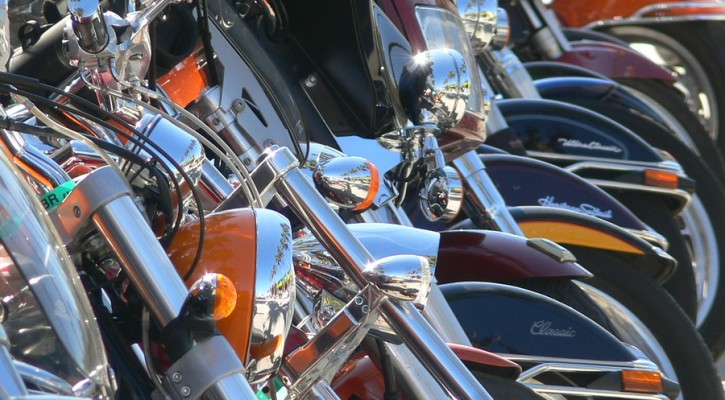
Slow Down Motorcycle Rally
March 26, 2014
Florida is a popular riding and rally destination, so it only seems fitting that the state would host the “Slow Down” motorcycle rally in Fort Myers this Saturday. See the full story and get all the details here:
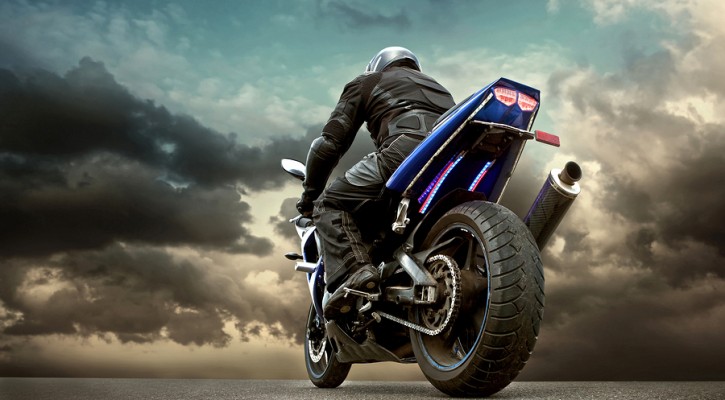
Motorcycle Insurance Discounts
March 26, 2014
As a motorcyclist, you are required by law to buy auto insurance. There are many factors that affect insurance rates, such as age, driving history and even your credit score. Unfortunately for the young, or those who were young once, these aren’t things you can do much about. However, there are a few things you can do today that will help lower those rates:
– Take a Motorcycle Safety Foundation (MSF) course or Military Safety Course
– Join a group such as the American Motorcycle Association, BMW Motorcycle Owners of America, Gold Wing Road Riders Association, Gold Wing Touring Association, Harley Owners Group, Motorcycle Safety Foundation or Venture Touring Society
– If you haven’t already bought your ride, look for a small or midsize commuter-type motorcycle as opposed to a high-horsepower racer
Airbags for Motorcyclists
March 25, 2014
Airbag jackets have been around for a few years now. Impact Jackets can inflate within 30 milliseconds, and have been known to save lives. Dainese took the airbag idea to whole new level, producing the D-Air suit, which uses 7 sensors to constantly analyze the rider’s movements and reduce triggering time to just 15 milliseconds. And now, Dainese has teamed up with Ducati to produce a whole new airbag system that uses wireless technology that can communicate between the bike and the suit.
According to Ducati, the new product will be available in Europe in May of 2014. Intelligent passive safety sensors are already included in existing Multistrada electronics, allowing the vehicle to detect a crash and wirelessly send the data to the motorcycle jacket, deploying within 45 milliseconds. Both the rider and passenger suits can be connected.

Motorcycle Camping Guide
March 25, 2014
Camping season is here! Get the knowledge and gear you need by reading up on this camping guide from Rider Magazine:
http://ridermagazine.com/2012/07/24/motorcycle-camping-and-adventure-gear-buyers-guide/
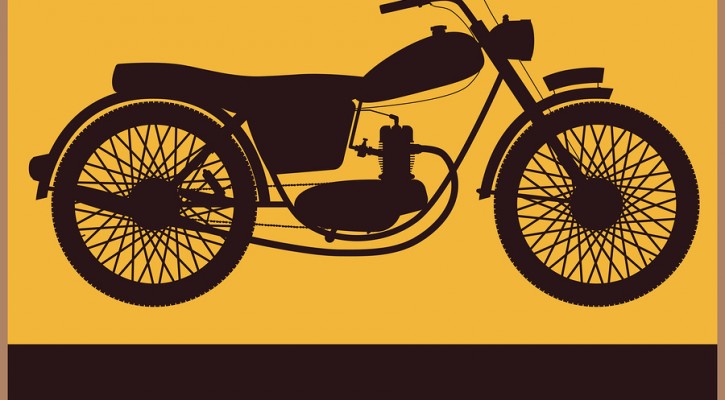
Save the Date
March 24, 2014
The 2014 Motorcycle Safety Forum will be held May 8, 2014 in Bryan, Texas. Motorcyclists and safety advocates can find more information here:
http://www.looklearnlive.org/2014/02/21/save-the-date-for-the-2014-motorcycle-safety-forum/
Weller Vs Orwell
March 24, 2014
The founder of Skully helmets, Marcus Weller, has an idea that some may find Orwellian: a not-so-distant future where people share their location data in the interest of safety.
While riding down a crowded Barcelona Street, Weller turned his head for a split second to read a street sign. The next thing he knew, he had crashed into the back of a smart car, resulting in a few battered bones and a brilliant helmet idea. The Skully AR-1 was born: a masterpiece of technology with displays fed by rearview cameras and GPS navigation, among other modern conveniences. Never again would he have to turn his head away from the road to read a street sign.
However, Weller wants to go further than that. He asks riders to “imagine a world in which we can create a digital force field around the rider. … Wouldn’t that be crazy? Well guess what? It’s possible.”
In fact, this isn’t an entirely new idea. Google’s driverless cars already have the technology to sense other vehicles around them. With the platform already in place, cars and motorcycles (or motorcycle helmets) could digitally communicate with each other to avoid accidents.
How to Buy Your First Motorcycle
March 24, 2014
So, you’ve discovered the visceral exhilaration of the motorcycle, you’ve taken the test, you’ve saved up the money, and now you’re hopping around the dealerships in search of your first street bike. Well, before you spend that hard earned money on a brand new ride, there are a few factors to consider:
Cost Chances are, that first motorcycle is going to get dropped. It’s inevitable, really. Most new riders drop their first bike during slow-speed maneuvering, and occasionally when they forget the bike is in gear while starting (don’t forget FINEC!). For this reason, a lower-cost used model is preferred. Find a tough old beast that can handle getting dropped, is easy to fix, and won’t lose too much value with a few scratches on it.
Weight Small, middleweight bikes are less likely to get dropped, and are far more manageable for new riders. Also, lighter bikes are a lot easier to handle for those living in urban areas with lots of stop-start traffic.
Height This often-overlooked aspect of motorcycle buying is very important. You want a bike that allows you to put both feet on the ground.
Power Less is more for beginning riders. It may not seem as “cool”, but a 500cc is safer for both you and your motorcycle. Remember, this is your first bike, not your last. You will want to have enough control to survive that first year of motorcycle riding with your bike in one piece and your head still attached. By saving on repair and hospital costs, you’re investing in a better bike for the future.
Type Consider how and where you will be riding. Are you going to cruise down country roads or commute in downtown traffic? How long do you expect your average ride to be? For quick sprints through the city, a simple moped or sporty cafe racer may be the ticket. Racers are very responsive and handle well, giving you the control you need in heavy traffic. However, longer rides require more comfort, both in the seat and handlebar placement. For long distance cruising, look for higher handlebars that allow you to sit in a more upright position. This will take weight off your wrists and allow you to sit in a posture that’s better for the back.
With these tips in mind, you’re sure to find the best first-time motorcycle for your lifestyle.
